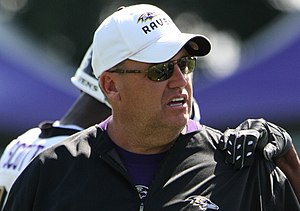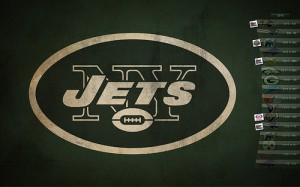What are the engagement and communication competencies every organizational leader should possess during times of change? We counsel senior leaders, saying communication content must roll up to the strategic goals of the organization. But what does that mean, exactly? Does this corporate speak belie the fact that a leader must be good with people? A look at pro football’s Rex Ryan of the New York Jets—the player’s coach—may provide some answers and a working model.

Most players across the NFL say they would love to play for coach Ryan. The reason, most players say, is that he’s found a way to make the game fun again. He’s criticized for being dyslexic, and for joking, cussing and eating too much. But he’d take a bullet for his men, and is known as a defensive auteur—a man with “a beautiful football mind.” As of this writing the Jets have won five in a row after losing their season opener, and are now the team to beat. But this winning season was clinched long before the season began. Why? Because Ryan knows how to lead and communicate, skillfully weaving motivation and engagement principles into the fabric and culture of his organization.
1. “I’ll Always Tell You”—This is one of Rex Ryan’s signature phrases. He’s all heart and always up-front. He retains a boyish wonder for the game that’s contagious: “Tell me what we don’t have!” he exults from the sidelines during a recent practice session. Today, coaches are cultivated in the league’s image, with the result that they seem like bottom-line executives — corporate, compulsive and always on message, says Nicholas Dawidoff in a recent New York Times Magazine article.
But Ryan is open and candid to the point of making people nervous. He interviewed for many of the top coaching jobs but was thought to be too much of a risk and was turned down, but his most enthusiastic supporters are players and fellow coaches, who regard his “supposed flaws as great virtues:”
“Some say he’s too brash. But he’s just telling you what he really believes. He has tremendous leadership skills. He’s the hard-charging general who doesn’t do everything by the book but wins. He gets other people to buy in,” says 40-year veteran linebacker coach Bob Sutton. He gains insights from the close working bonds he develops with his players. They trust him because he works hard to put them in a position to succeed.”
Personal charisma? Or is there an engagement competency at work here—something every senior leader could cultivate to engender this kind of trust? Imagine if senior leaders were intentional, dedicating time each week to getting out of their offices and walking around among those they lead, listening, counseling and motivating when and where they could. Change management communication consultant Linda Dulye calls it “management by walking around.” Read how she perfected this communication tactic to drive e ngagement at Rolls Royce.
ngagement at Rolls Royce.
This is a far cry from the communication plan at many organizations: Large scale change announcements—“We’re restructuring; your pay grade will be affected”—followed by a duck and cover routine, laying low in hopes that things will get better with time. This rather than a systematic plan to communicate often about how changes will affect the organization—a plan to communicate and capture feedback in order to dissipate rumors that inevitably fill the void created in the absence of robust communication.
2. Believe in Your People— Is it all about them, as Ryan seems to say? If employees are your organization’s most important asset, then yes, it is all about them. The ability to form a strategic business plan to lead the organization is an assumed competency, but what may be missing is belief in your people. Players say of Ryan: “Everyone in Baltimore {his last gig} misses him. Guys in Baltimore who left Rex, they didn’t play as well after leaving him…Once you play for him, you don’t want to play for anybody else.”
Are your senior leaders coached to communicate in a way that instills this kind of confidence in employees—not manipulation, but a true belief in their ability to get the job done? Confidence is a fragile, discretionary, and non-tangible asset, but it is the secret weapon of the overcomer, the motivational factor that’s missing from so many organizations, the antidote to so many things.
By contrast, another Super Bowl-winning coach is characterized as “cold and unsentimental.” Though his team performed well he led in a way that seemed dehumanizing for players and fans: “He created an atmosphere of suspicion and unease and had a penchant for humiliating individuals in front of the team.”
Dawidoff sums it up: “It has become anathema for athletes to endure serious injuries and play on—but not for football players. To them, toughness is the essence of the sport and anguish is a form of effort, something you nobly give. As Sutton, the former Army coach, will tell you, like soldiers who fight not for flag or country but for officers and comrades, football players make their sacrifices for their teammates and coaches. In Baltimore, players stayed in games with lacerated kidneys, torn-up knees and shattered hands for Ryan because he was, in turn, all about them.”
3. Be Drawn to Unlikely Talent—“He has things in his past. So do I,” says Ryan of one of his players. “If the Ravens turned their back on me, I’d be nowhere.” He’s drawn most to unlikely athletes, “players taken in the last rounds of the draft or not drafted at all, denizens of practice squads, misfits and afterthoughts.” How many game-changing recruits miss the cut at your organization because certain keywords aren’t lifted from their resume by scanning software? Maybe there’s a better way. In pro football the non-recruited players who show up and try out for the team are called “walk-ons.” Jim Leonhard, the 5-foot-8, 180-pound linchpin of the New York Jets league-leading secondary, is one such individual. “I noticed how smart he was,” says Ryan, who saw the opportunity to develop Leonhard into a kind “on-field air-traffic controller.” He had ability to communicate what each player on defense was supposed to do on every play. Ryan spotted him during a three-day tryout after he was cut from the Buffalo Bills. He would have never made it past the resume scan at most organizations—how stupid.
4. Encourage Individuality—Ryan makes every player feel unique and important.This may sound counter-intuitive against the backdrop of corporate teamwork and collaboration. Not at all: The individual operating in his or her gifting is what defines the organization as a whole. Ryan’s interest in each of his players is personal:
“Another day, while addressing the team after a close loss to Jacksonville, he broke down in tears. “Everyone took it as a young coach in over his head — he’s losing it, he can’t handle it,” Leonhard says. “That’s not it at all. He knew the talent and ability we had, and he wanted us to live up to it. That’s what you want in a coach. Someone who genuinely cares about you.” The next week, the Jets coaches found custom-made KleenRex boxes on their desks. Thus spurred, the Jets rallied into the playoffs and all the way to the A.F.C. championship game, where they led the Colts at halftime.”
5. Make Work Fun Again—Can we make work fun again? Read Dan Pink’s book on Motivation (Drive): The feelings of accomplishment and recognition—the joy we derive from engagement with our work far exceeds the monetary compensation we receive from it. We know this intuitively. When our work is informed by our unique giftings and calling we enjoy what we do and we shine—but this could take a lot of tinkering. We must have the freedom to try something new and fail. That’s where communication content and culture hold sway. Is such tinkering encouraged where you work, or is your organization risk-averse—more interested in assigning blame than listening and seeking to understand?
Ryan knows how to make the work fun again: “When he coached the Baltimore defensive line, Ryan devoted much time to keeping players interested. Linemen like Sam Adams, Tony Siragusa and Rob Burnett enjoyed the football Jeopardy! and the kicking contests, but they most looked forward to Thursdays, when Ryan gave each player a chance to go one on one with him in a line drill. ‘I know what to do,’ he says. ‘I just can’t do it. I’d get the crap beat out of me. You’re messing with some of the strongest dudes on this planet. They can hurt you by accident. Grab you, you’re all bruised up. It’s fun. I’m a kid anyway.’”
Photo credit: by Hawk Eyes, Jeff G. Wikipedia Commons, Charlie Lyons-Pardue (Jets)




Great article, Dom! Being out here in Bears country (and not being a huge football follower anyway), I wasn’t familiar with Rex Ryan. Certainly some things that corporate managers could learn from his leadership style!
Excellent article! We are linking to this great
article on our website. Keep up the great writing.
Thank you, Bruno.